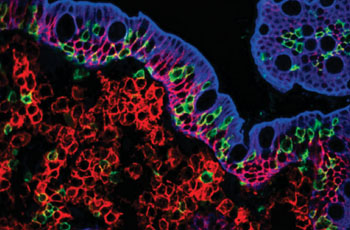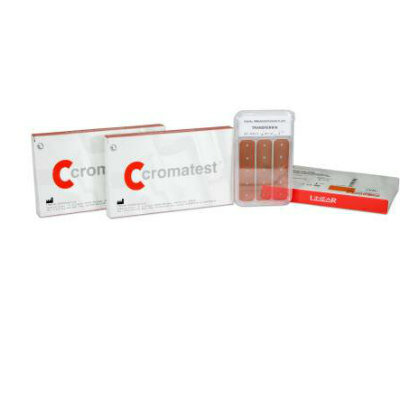Simplified Blood Test Diagnoses Celiac Disease
By LabMedica International staff writers
Posted on 07 Oct 2015
The diagnosis of celiac disease requires a tissue sample from the small intestine, which can be extremely unpleasant, but a blood test has been developed which provides a rapid, painless answer. Posted on 07 Oct 2015
The tissue samples are taken by gastroscopy, which means a tube being inserted down the throat to the duodenum and the tissue samples must also be taken in order to obtain a definite diagnosis. This can be very unpleasant, and children are put under anesthetic during this type of examination.
Scientists from the Faculty of Medicine at the University of Oslo (Norway) have now developed a new blood test that makes it much simpler to diagnose celiac disease. The test uses a reagent composed of human leukocyte antigen (HLA) molecules and fractions of gluten which are added to the blood sample. A reagent is a substance to which something is added to detect the presence of another substance. In this case the reagent binds itself to the T cells that are in the blood sample. Magnetized antibodies are also added which in turn bind to the reagent.
Asbjorn Christophersen, PhD, a Postdoctoral fellow, said, “When the food that one eats enters the small intestine, it is reduced to tiny fractions and presented to the T cells on so-called HLA molecules. The HLA molecules present various elements of what one consumes, as well as what is inside the cells. The task of the T cells is to monitor cells to see if they are infected by viruses or bacteria. In the case of celiac disease, the T cells think that gluten is a virus or bacteria. The T cells send a message to the other immune cells to attack not only the gluten protein itself, but also cells, and an enzyme that binds itself to gluten and thus the small intestine becomes inflamed.”
Dr. Christophersen added, “When we allow blood cells to flow through a magnetic column, the cells that react to gluten remain suspended in the column while all the other cells flow through it. We observe that celiac patients have a much higher number of gluten-reactive T cells in their blood than non-celiacs. The level is more or less independent of how much gluten they eat. We are now in contact with several leading international companies that are interested in using the technique for the diagnosis of celiac disease.”
Related Links:
University of Oslo















